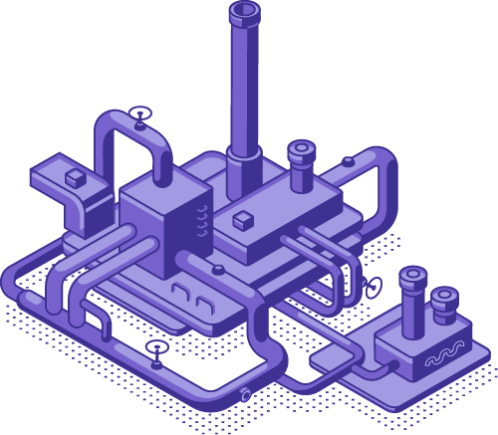Natural Gas Value Chain
Production
The production segment consists of the exploration of natural gas, wells producing natural gas, and production equipment located at the well site. Because wells often co-produce natural gas and crude/condensate, the ONE Future Protocol provides an approach that allocates the total methane emissions associated with only natural gas.


Gathering and Boosting
The gathering and boosting (G&B) segment includes pipelines and other equipment used to gather natural gas from production facilities, treat the gas as needed through dehydration or acid gas removal, and compress the gas to transport it to a natural gas processing facility, a natural gas transmission pipeline, or to a natural gas distribution pipeline. Methane emissions from combustion, equipment leaks, and natural gas-operated pneumatic controllers are the three largest emissions sources that gathering and boosting companies are working to further reduce.
Processing
The processing segment consists of gas processing plants where hydrocarbons and fluids in produced natural gas are separated to produce natural gas that meets pipeline specifications. Equipment associated with the gas processing segment includes the equipment inside a gas processing plant, such as absorption units or cryogenic expanders, fractionators, dehydrators, acid gas removal units, and compressors. Engine exhaust from uncombusted natural gas is the largest source of methane emissions that the processing segment is tackling.


Transmission and Storage
The transmission and storage (T&S) segment includes high-pressure, large-diameter pipelines that transport natural gas from G&B and processing to natural gas distribution systems or large-volume consumers such as power plants. EPA combines T&S into one segment since transmission companies own and operate many of the storage facilities. Natural gas compression is a significant operation for the T&S segment – therefore emissions from compressors, components designed to vent gas, and compressor exhaust play a more prominent role in methane emissions.
Distribution
The distribution segment covers natural gas pipelines that take high-pressure gas from transmission systems and gathering systems, reduce the pressure, and distribute the gas through primarily underground service lines to users. This segment includes natural gas mains and services, metering and pressure regulating stations, customer meters, as well as associated underground storage and LNG storage assets.

